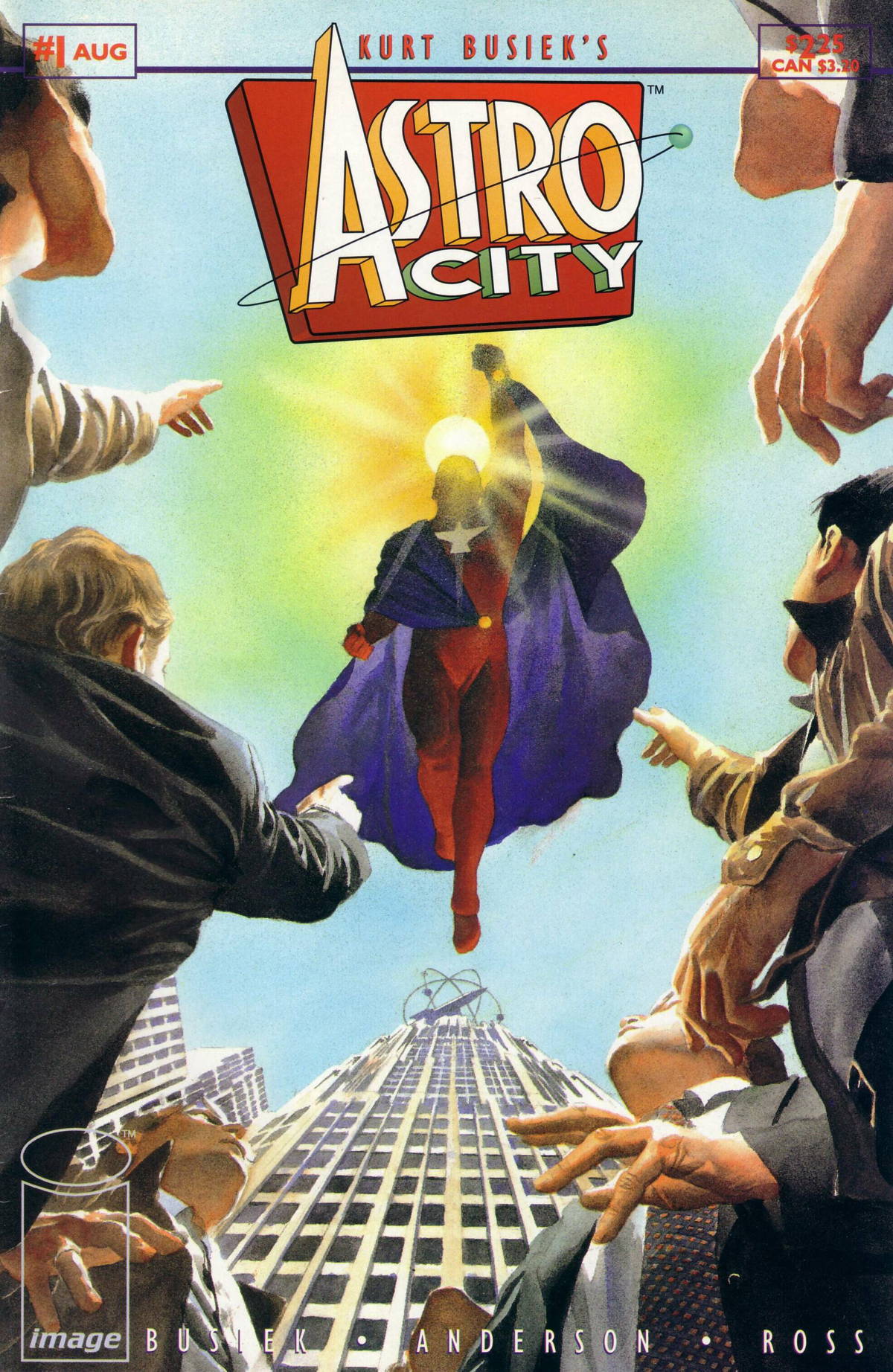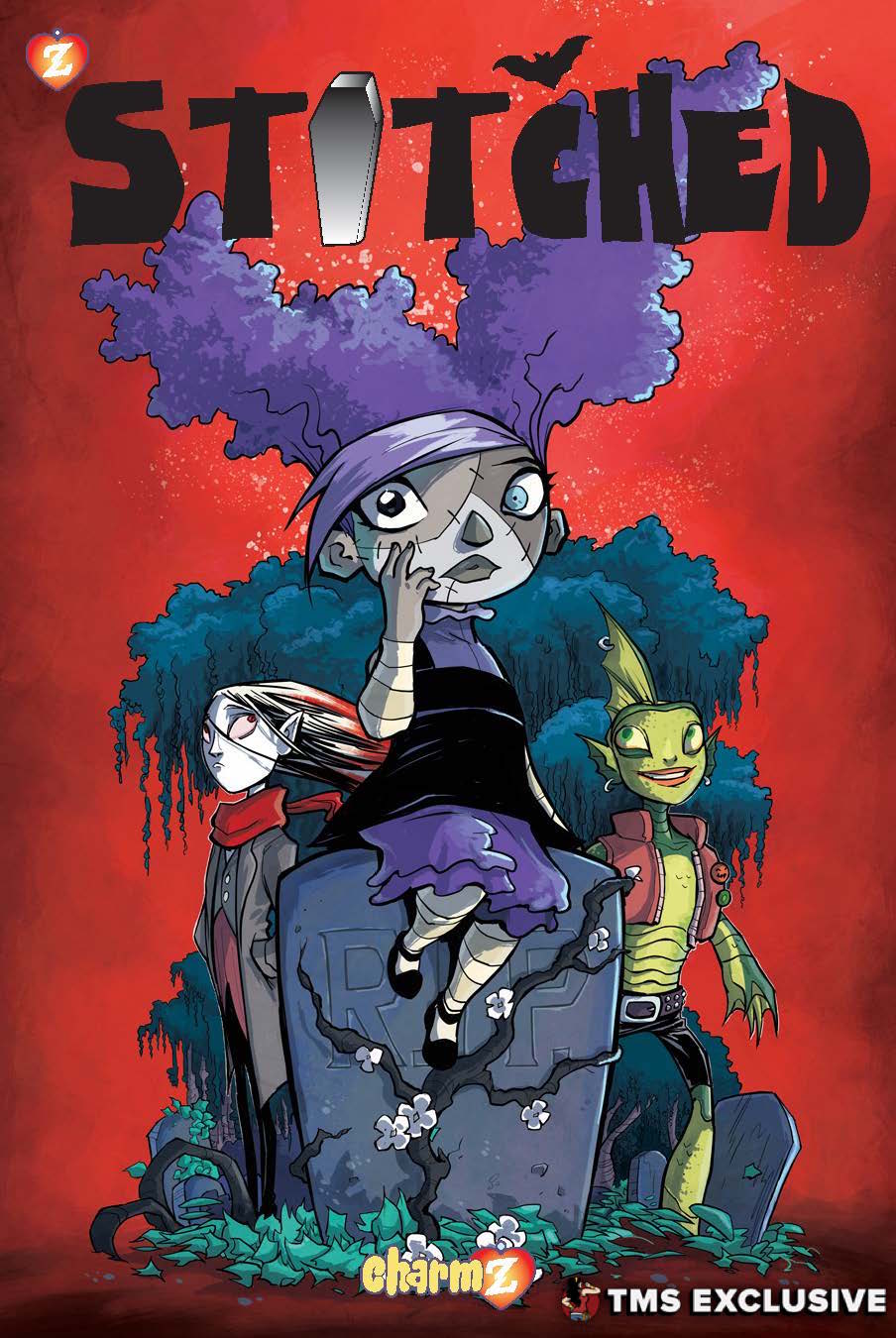By David Seidman
Writers and artists are born enemies. “That stupid artist didn’t draw what I wrote!” echoes down the halls of comics history.
But it doesn’t have to be that way.
To write comics, you need to know how to work with artists just as much as you need to know plotting, characterization, and dialogue. Fortunately, comics writers have come up with a few useful methods.
The minds meet!
If you don’t know who your artist will be, try to find out. Talk with the artist in person, if possible. If not, then work by FaceTime or Skype; if that doesn’t work, then talk on the phone; if you can’t work by phone, then use email.
I’ve talked to a lot of writers and artists about this subject. Almost all of them say that if they talk before writing a word or drawing a line, they can reduce the chances of miscommunication and frustration.

“You do a little back and forth when you first get paired up — ‘Hey, what do you like to draw? What do you hate to draw? How many panels a page are you comfortable with?’ That sort of thing,” Kelly Sue DeConnick (Bitch Planet, Captain Marvel) has said.
Artist Jill Thompson (Sandman, Scary Godmother) has an example of how this process can work. “Neil [Gaiman] is one of the most excellent writers that an artist can work with. . . . I [told Neil], ‘I can draw anything. I enjoy drawing acting, the human figure, and I like to do facial expressions and silent things, like that subtle beat between two statements. The thing that I hate to draw is cars.’ He goes, ‘All right, well, there won’t be any cars.’ ”
Talking things out can also clear up confusion. You may tell your artist, “I’ve got a story about an alluring, beautiful woman,” and your artist may say, “That’s great! I love to draw beautiful women.” So far, so good — but your idea of beauty and allure may be Nicki Minaj, while his is Taylor Swift. Issues like these are important to work out early to avoid conflicts later.
If you can’t find out who the artist will be, you can do like Nat Gertler (The Complete Idiot’s Guide to Creating a Graphic Novel). His script headers include phone and email info so that the artist can contact him.

Plotting and scripting: How much detail?
A key area that affects the writer-artist relationship is how much detail the writer should give the artist.
When it comes to plot outlines, there are no rules. Steven Grant (2 Guns, The Punisher) says, “I’ve had artists ask for the roughest of outlines, and I’ve had artists ask for everything spelled out in great detail. Depends on the artist.” Busiek agrees: “There is no one approach that all artists prefer, because artists are people and people are different.” You don’t have to do everything that the artist wants, but be as flexible as you can.
Being flexible doesn’t mean giving up your vision, especially when you move from plot to script. Writer-artist Huehner (True Blood, The Witching Hour), who sometimes writes stories for other artists to draw, says, “We talk a lot about the script (where possible), and I’m very open to their interpretations. But I definitely have visual ideas. and I’m up front with anyone I work with.”
You can ask the artist to be flexible, too. Veteran artist Joe Staton (Green Lantern) says, “One of the best scripts I ever worked on was by Archie Goodwin (no surprise) when I was doing layouts for Gil Kane on Spider-Man #150. It was just a very few typed pages, each paragraph was a page and each sentence was a panel. Beautiful, like haiku. Also doing layouts for Gil, we had a Ghost Rider script from Gerry Conway, with this art direction: ‘Five pages, they fight.’ Once Steve Englehart on GL Corps gave me several pages of dialogue, with the note that the characters should be doing something while they say these lines. Lots of ways to do the job.”
Scripting: Get emotional
Whether or not you know who will draw your work, a key to helping him or her make your scenes live is emotion. “In my scripts,” writer-artist Wendy Pini (ElfQuest) says, “I often took pains to describe the emotion of a given panel or panel sequence. Not all comic artists think about or are even comfortable with depicting strong emotion. Instead they concentrate on action, composition or technique. But a story isn’t worth much unless it engages the reader emotionally, taking them through some sort of transformation. Honing my skills at how to describe the emotional meat of a scene helped me get what I wanted from my collaborators.”
Other writers agree.
“The key advice Steve Gerber (Howard the Duck) passed along to me was to rely more on emotional than physical descriptions,” says Disney comics writer Buzz Dixon. Shea Fontana (Wonder Woman, Super Hero Girls) adds, “Leading with emotion/intent [is] always the most important part from my perspective; then the artist can do their thing with the visual storytelling. Making the emotion clear is going to be what sells my plot points.” And writer-artist Lea Hernandez (Teen Titans Go! and, I proudly disclose, my wife) says, “As an artist, I want to know how a character is feeling.”
Nailing the thumbnail
Some writers do thumbnail sketches showing how they want the artist to lay out pages and panels, even drawing quick roughs of how they want the artist to present the characters.
“I sit down with the artist, when possible, and sketch badly,” says Mike Baron (Nexus, The Punisher). “I discuss action principles. Action should flow from left to right because that’s the way we read. Hold your camera steady and let the figures move.”
Some artists don’t like the writer guiding their hands so closely. Writer-editor Harvey Kurtzman sketched out pages for Jack Davis, Wally Wood, and other accomplished artists on classics such as Frontline Combat. But “most of them really didn’t want to work that way,” Kurtzman’s boss, publisher William Gaines, told The Comics Journal. “Some of them liked it; some of them recognized that probably what Harvey wanted was better than what they would have done. But still, it was an imposition on their freedom of action.”
If your artist doesn’t want your thumbnails, consider doing them anyway — simply for yourself. says, “I always did thumbnails myself . . . even if I didn’t need to share with the artist,” says Mike Carlin (writer of Captain America and longtime editor of Superman). “It would make my descriptions clearer and to the point in the script.” And writer-artist Scott Shaw (The Simpsons) says that breaking down pages into panels with stick-figure characters can improve your writing: “If you can’t tell your story with pictures, it’s unlikely your artist will either. If that’s the case, you need to rethink your story.”
What artists hate
If you don’t know who your artist will be, you can still try to be a good partner. For instance, you can keep your story from focusing too hard on things that a lot of artists don’t like to draw.

For instance, many artists, even very skilled ones, dislike drawing constructed objects that they’d have to render realistically.
• Tim Sale (Batman, Captain America), Liam Sharp (Wonder Woman), Jaime Hernandez (Love and Rockets), Frank Cho (Wonder Woman, Skybourne), and Erik Larsen (Savage Dragon) are with Jill Thompson: They don’t like to draw cars.
• Babs Tarr (Batgirl), Tom Hart (Hutch Owen), Robert Pope (Scooby-Doo) are among those who don’t enjoy doing buildings.
• For other artists, the problem is motorcycles (Chris Samnee, Daredevil) or guns (George Jeanty, Buffy the Vampire Slayer).
Anything with a lot of complex detail — crowd scenes, for instance, or complicated costumes — is also likely to be unpopular. Another unwelcome chore is realistic rendering of animals. For instance, Nate Powell (March), Thom Zahler (My Little Pony), Juan Ferreyra (Green Arrow), and Adam Gorham (Marvel’s Rocket, Image’s Violent) don’t like to draw realistic horses. Still other artists, like Adam Warren (Empowered) and Brett Booth (Teen Titans), dislike drawing backgrounds.
So it’s probably not wise to call for a downtown urban scene where a stampede of horses is causing a massive riot among crowds of both pedestrians and motorists.
Now, if your artist is a pro, and you hand her something that she hates to draw, she’ll take a deep breath, limber up her hand, and draw them. But she may draw them inaccurately. Or if she takes the time to research them and draw them properly, she may make up the time by drawing other parts of the story in a rush, which could result in unappealing art.
So keep the artistic bogeymen to a minimum if you can.
Now what?
Talk with your artist. Focus on emotion. Thumbnail your story. Minimize cars and horses. These notes won’t make you the ideal comics collaborator, but they’re useful to keep in mind.
Even more useful is the attitude that goes into collaboration. A lot of comics creators would agree with the opinion of Disney artist Patrick Block: “The secret to creating a comic with another individual is in putting aside your own ego and serving the story. The creators need to share the basic vision of where their tale needs to travel to be completed, and all of the work should be geared towards making the comic story the best it can be.”
David Seidman has written, edited, and marketed comics. For more from him, visit his blog, https://davidleeseidman.wordpress.com/.









“Writers and artists are born enemies.” is a completely ridiculous statement. There can certainly be bumpy spots or diagreements in a collaborative medium like comics, but I know a ton of artists and writers in the industry and I don’t think a single one would agree with this statement.
Comments are closed.